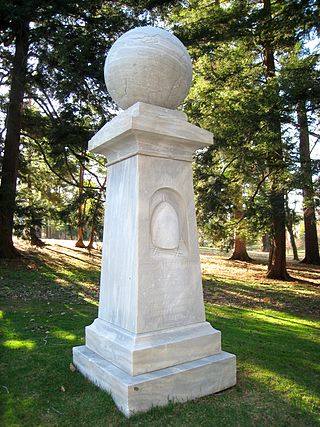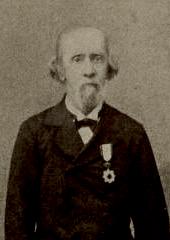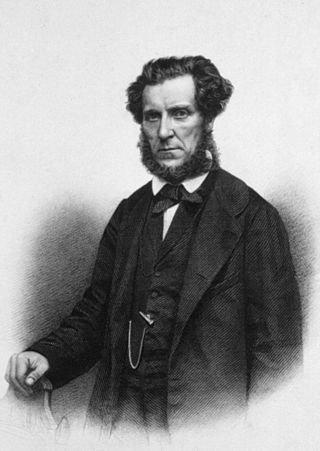Related Research Articles

The American Board of Commissioners for Foreign Missions (ABCFM) was among the first American Christian missionary organizations. It was created in 1810 by recent graduates of Williams College. In the 19th century it was the largest and most important of American missionary organizations and consisted of participants from Protestant Reformed traditions such as Presbyterians, Congregationalists, and German Reformed churches.

The London Missionary Society was an interdenominational evangelical missionary society formed in England in 1795 at the instigation of Welsh Congregationalist minister Edward Williams. It was largely Reformed in outlook, with Congregational missions in Oceania, Africa, and the Americas, although there were also Presbyterians, Methodists, Baptists, and various other Protestants involved. It now forms part of the Council for World Mission.
OMF International is an international and interdenominational Evangelical Christian missionary society with an international centre in Singapore. It was founded in Britain by Hudson Taylor on 25 June 1865.

Peter Parker was an American physician and a missionary who introduced Western medical techniques into Qing dynasty China, at the city of Canton. It was said that Parker "opened China to the gospel at the point of a lancet."
The Church Mission Society (CMS), formerly known as the Church Missionary Society, is a British Anglican mission society working with Christians around the world. Founded in 1799, CMS has attracted over nine thousand men and women to serve as mission partners during its 200-year history. The society has also given its name "CMS" to a number of daughter organisations around the world, including Australia and New Zealand, which have now become independent.

Alice Ho Miu Ling Nethersole Hospital (AHNH) is an acute district general hospital managed under the New Territories East Cluster of the Hospital Authority in Hong Kong. Established by the former London Missionary Society in 1887, it was the first teaching hospital in Hong Kong to train Cantonese locals in Western medical science. It moved to its current location in Tai Po in 1997.

In the early 19th century, Western colonial expansion occurred at the same time as an evangelical revival – the Second Great Awakening – throughout the English-speaking world, leading to more overseas missionary activity. The nineteenth century became known as the Great Century of modern religious missions.

Divie Bethune McCartee (1820–1900) was an American Protestant Christian medical missionary, educator and U.S. diplomat in China and Japan, first appointed by the American Presbyterian Mission in 1843.

William Lockhart was a Protestant Christian missionary who served with the London Missionary Society during the late Qing Dynasty in China. In 1844, he founded the first western hospital in Shanghai, which was known as the Chinese Hospital. The hospital is named Renji Hospital now, which is one of the most famous hospitals in China.

Christianity has been in Hong Kong since 1841 when British Empire started to rule Hong Kong.
The Medical Missionary Society in China was a Protestant medical missionary society established in Canton, China, in 1838.
Medical missions in China by Catholic and Protestant physicians and surgeons of the 19th and early 20th centuries laid many foundations for modern medicine in China. Western medical missionaries established the first modern clinics and hospitals, provided the first training for nurses, and opened the first medical schools in China. Work was also done in opposition to the abuse of opium. Medical treatment and care came to many Chinese who were addicted, and eventually public and official opinion was influenced in favor of bringing an end to the destructive trade. By 1901, China was the most popular destination for medical missionaries. The 150 foreign physicians operated 128 hospitals and 245 dispensaries, treating 1.7 million patients. In 1894, male medical missionaries comprised 14 percent of all missionaries; women doctors were four percent. Modern medical education in China started in the early 20th century at hospitals run by international missionaries.

John Kenneth MacKenzie was an English medical missionary to China. He initially started his work through the London Missionary Society in Hankou (Hankow) in 1875. In Hankou, he treated patients in the London Missionary Society hospital, learned Chinese, and engaged in evangelism. The majority of the cases he treated were eye disease, opium addiction, and cases involving surgery. In 1878, MacKenzie transferred to Tianjin (Tientsin) due to the failing health of his wife. In Tianjin, MacKenzie constructed and ran a hospital with the help of the Viceroy's patronage and also established the Tientsin Medical School. MacKenzie also helped in the organisation of the Medical Missionary Association in China and the editing of the Medical Missionary Journal. He employed evangelism in many parts of his work but died an early death in 1888 due to smallpox.

Robert Harold Ainsworth Schofield (1851–1883), known as Harold Schofield, was a British medical missionary in China. Before travelling there, he worked in Europe and the Middle East in hospitals and clinics. He died during his mission to China.
Isabella Fisher Hospital was located in Tianjin, China. Built in 1881 and opened in 1882, it was founded by the Methodist Episcopal Church (South).

Frederick Charles Roberts was an English physician and medical missionary who served with the London Missionary Society in Mongolia and China. Roberts spent his entire career as a practicing physician in East Asia, dying in China after seven years of mission work. He is best known for his contributions as the sole medical provider and second director at the Tientsin Mission Hospital and Dispensary in China, where he treated an estimated 120-150 patients a day, and for his famine relief efforts in the rural districts outside Tientsin. He also taught at the first Western medical school in China and is the namesake of Roberts Memorial Hospital, which was established in T'sangchou, China in 1903.
Tianjin People's Hospital is a hospital in Tianjin, China. Prior to the Chinese Communist Revolution, it was known as Mackenzie Memorial Hospital. Olympian Eric Liddell was born there in 1902.
The history of Methodism in Sichuan began in 1882 when missionaries began to arrive from the United States. Methodists founded or helped found several colleges, schools, and hospitals to aid in modernization and conversion efforts. Later, American Methodists were joined by missionaries from Canada. Methodism grew to become one of the two largest denominations of Protestant Christianity in the province by 1922, along with Anglicanism.
Leopold George Hill was an English medical missionary who worked as a member of the Church Mission Society (CMS) treating leprosy patients in Pakhoi, China. Hill was motivated to join missionary work by his religious upbringing and intended to treat his patients to not only recover physically but also gain a sense of religious purpose. He worked alongside his wife, Emma Amelia Hill, as well as with other fellow missionaries to continue the work of Dr. Edward Horder's establishment of the Pakhoi leper colony. After retiring from missionary service, Hill continued his contributions to CMS through administrative work as a Physician to the Society.
References
- ↑ "Roberts Memorial Hospital Photographs - Archives Hub". archiveshub.jisc.ac.uk. Retrieved 2019-12-08.
- ↑ "Hospital and Medical Institutions Search: hospital, memorial, roberts | Western Medicine in China, 1800-1950". ulib.iupui.edu. Retrieved 2019-12-08.
- 1 2 Collections, Special; Library, SOAS. "New donation: Photographs of the Roberts Memorial Hospital, China – Special Collections, SOAS Library" . Retrieved 2019-12-08.
- ↑ Bryson, Mary (1895). Fred C. Roberts. London: H.R. Allenson.